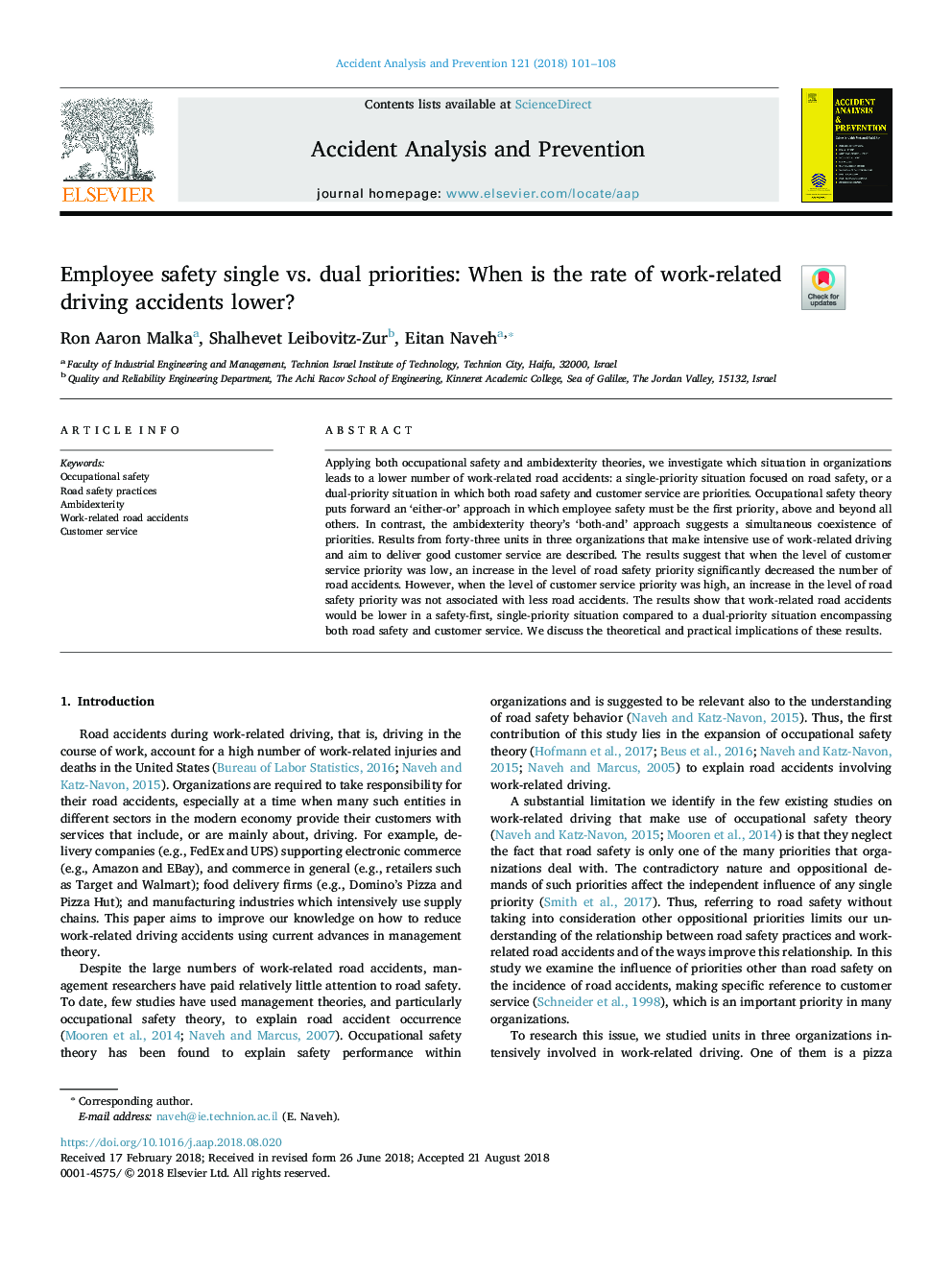| Article ID | Journal | Published Year | Pages | File Type |
|---|---|---|---|---|
| 10148928 | Accident Analysis & Prevention | 2018 | 8 Pages |
Abstract
Applying both occupational safety and ambidexterity theories, we investigate which situation in organizations leads to a lower number of work-related road accidents: a single-priority situation focused on road safety, or a dual-priority situation in which both road safety and customer service are priorities. Occupational safety theory puts forward an 'either-or' approach in which employee safety must be the first priority, above and beyond all others. In contrast, the ambidexterity theory's 'both-and' approach suggests a simultaneous coexistence of priorities. Results from forty-three units in three organizations that make intensive use of work-related driving and aim to deliver good customer service are described. The results suggest that when the level of customer service priority was low, an increase in the level of road safety priority significantly decreased the number of road accidents. However, when the level of customer service priority was high, an increase in the level of road safety priority was not associated with less road accidents. The results show that work-related road accidents would be lower in a safety-first, single-priority situation compared to a dual-priority situation encompassing both road safety and customer service. We discuss the theoretical and practical implications of these results.
Related Topics
Physical Sciences and Engineering
Chemical Engineering
Chemical Health and Safety
Authors
Ron Aaron Malka, Shalhevet Leibovitz-Zur, Eitan Naveh,
